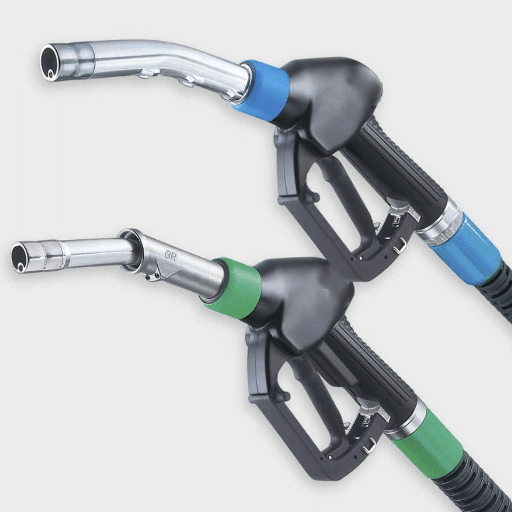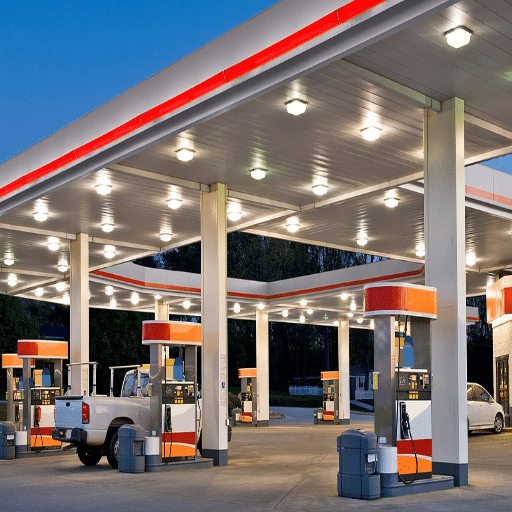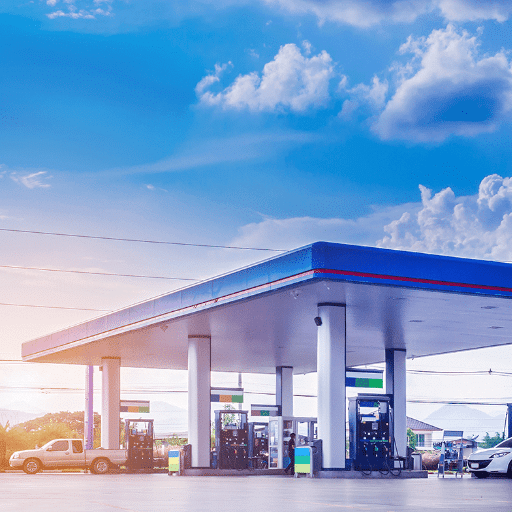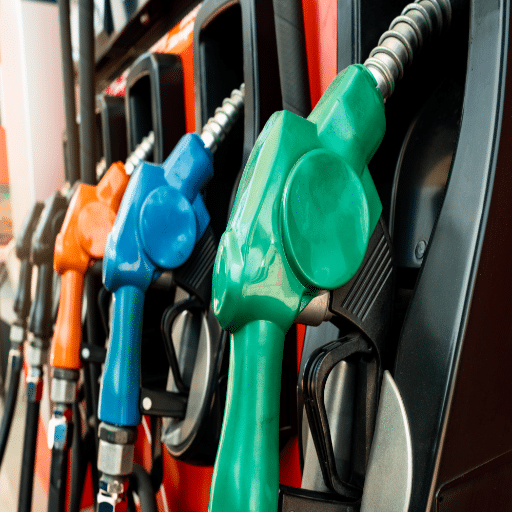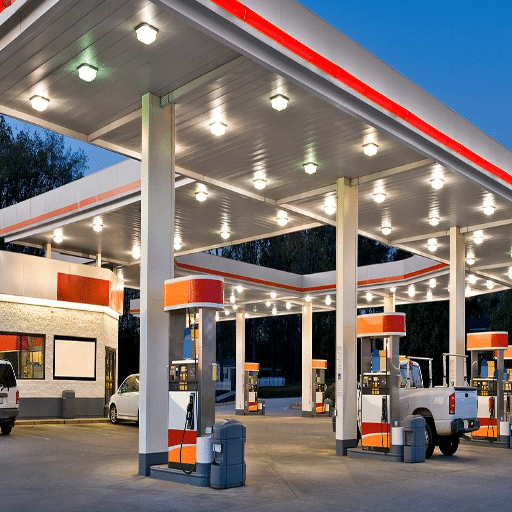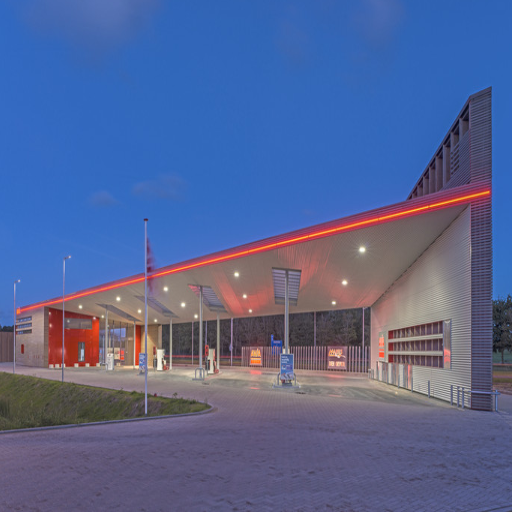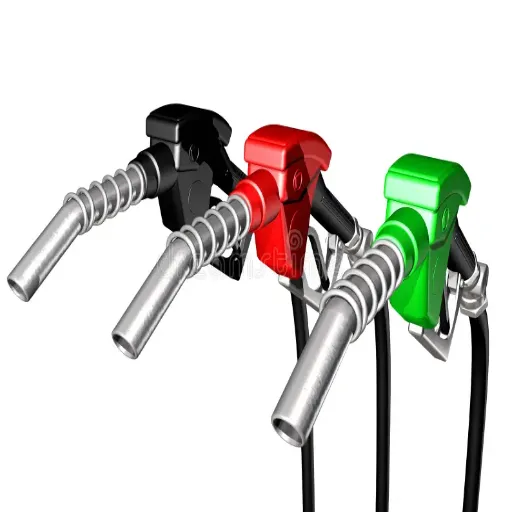Introduction to Fuel Nozzles
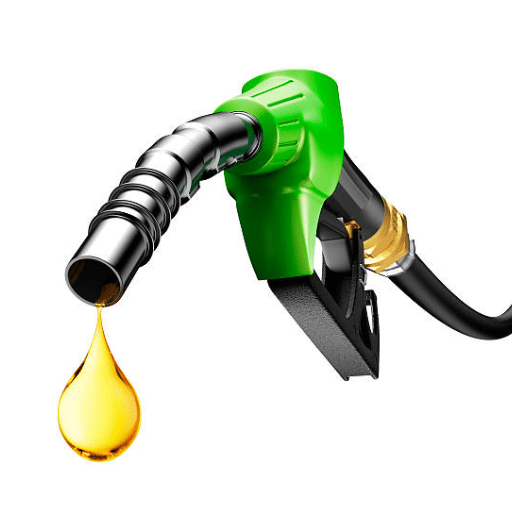
Fuel nozzles are designed in such a manner that they may lend themselves to safe and good fuel dispensing with vehicles of their kind. Diesel nozzles and gasoline nozzles have size differences to avert an accidental mixing of fuels, as using the wrong type of fuel can be very detrimental to a vehicle’s engine. The diesel nozzles are mostly larger in size; thus, they rarely fit into gasoline tanks, whereas the gasoline nozzles are smaller and cannot easily hit a trigger on the diesel fuel system. This difference in size, acting as a measure of safety, thus ensures compatibility between the nozzle and the fuel tank, and henceforth protects the engine of the vehicle from being harmed.
What is a Fuel Nozzle?
The speaker of the fuel nozzle dispenses fuel efficiently into vehicles or into machinery. It also acts as an interface between the fuel pump and fuel tanks, thereby permitting smooth transfer of fuel while being spill-proof and emission of vapors. The fuel nozzle comes with mechanisms like the automatic shut-off to guard against overflows; these nozzles may differ in size and type according to the fuel, whether diesel, petrol, or biofuels. Recent nozzles are designed with safety features and tailored to match particular fuel tank inlets for minimizing the chances of contamination and vehicle incompatibility.
Importance of Nozzle Size
Nozzle sizing is important for safety, compatibility, and efficiency during fuel transfer. It oversees any tank overfills, sets the flow rate for fuel according to the vehicle or equipment, and uses the formation of the correct size nozzle. Large nozzles are made for diesel trucks so that refueling can be speedy; narrower ones are designed for typical passenger vehicles to align with the inlet specifications. An incorrect size may cause spillage or system malfunctions, or it may result in cross-contamination between fuel types. On the other hand, a standardized set of nozzle sizes acts as a crucial misfuelling safeguard since these nozzle sizes physically prevent an incompatible fuel type from being dispensed into the wrong tank. Correct size plus compatibility ensures smoother operations and tends to prolong the lifespan of both fueling systems and engines.
Overview of Diesel and Gasoline Fuels
The two most popular types of fuels for internal combustion engines are diesel and gasoline; each has its own characteristics and applications. Being a thicker liquid, it has a higher energy content per gallon, so the diesel fuel works for heavy trucks requiring severe torque. Diesel engines run on compression ignition and do well in long-haul operations because of this very characteristic.
Gasoline fuels lighter engines, i.e., spark-ignition engines usually found on passenger cars and smaller vehicles. It gives quicker acceleration and a very smooth driving experience in daily drives. It has an energy output per gallon that is lower compared to diesel and hence is less fuel-efficient during long-distance traveling.
Diesel engines typically emit less carbon monoxide but emit relatively more nitrogen oxides and particulate matter, thus requiring advanced emission control systems. By contrast, gasoline engines produce less particulate matter but release more carbon dioxide because of their comparatively higher fuel consumption rates. Therefore, choosing between diesel and gasoline frequently depends on either how the vehicle is used or environmental considerations, or even fuel costs.
Comparing Diesel and Gas Nozzles
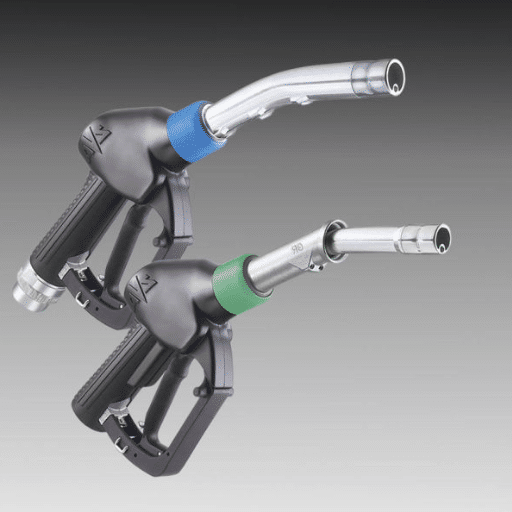
Diesel and gasoline nozzles differ in design due to potential misuse. Diesel nozzles tend to be bigger, preventing their insertion into the comparatively smaller filler neck of a gasoline vehicle. Hence, diesel nozzles have been color-coded green, unlike gasoline nozzles that are usually black. It is these subtle design differences that act as safeguards, ensuring that drivers put in the correct fuel into their vehicles or at least save their engines from potential damage due to misfueling.
Differences in Design and Functionality
Diesel Engines
Practical working of the diesel engine involves compression ignition, wherein the air is compressed under a very high pressure level before the fuel is injected and combusted by the heat present in the compressed air. Diesel is heavier, less volatile, and contains more energy per gallon than gasoline. This makes diesel efficient for engines where high torque and mileage are desirable, such as trucks and heavy machinery.
Gasoline Engines
Spark ignition occurs within gasoline engines in which sparks from spark plugs ignite pre-mixed combinations of air and fuel. Gasoline burns cleaner and is more suitable for lighter, high-speed applications like passenger cars. Components such as fuel injectors, pistons, and combustion chambers are engineered for the fuel type with which the engine is designed.
Basic differences in operation lead to a different composition and system of fuel delivery. Refueling with the wrong fuel may cause serious mechanical damage.
Fuel Flow Rates and Efficiency
Fuel flow rate and efficiency are key in engine performance as they dictate how much of the energy generated in the combustion chamber is converted into useful engine work. Diesel engines, due to their slower combustion process and because of the higher energy density of diesel fuel, tend to operate on lower rpm ranges but higher torque. This is what technically contributes to enhanced fuel efficiency as compared to gasoline engines, which tend to burn fuel faster due to their high rpm and high rate of combustion.
According to research, thermal efficiency depends on fuel flow rates. Diesel engines attain thermal efficiencies in the range of 40-45%, whereas gasoline engines operate around 25-30%. Injector design is crucial; modern injectors give the best treatment to fuel injection and combustion processes to minimize wastage. Beyond injector considerations, to achieve the best possible efficiency, the engine should be maintained with a steady load and do proper vehicle maintenance, irrespective of the type of fuel being used.
Compatibility with Fuel Types
Compatibility with fuel types depends on engine design, compression ratio, and operating requirements. Diesel engines are specially made to handle diesel fuel, which has more energy and relies on ignition by compression. Diesel in a gasoline engine or gasoline fuel in a diesel engine would be severely damaging, causing immediate mechanical problems and engine failure. Modular fuel engines are capable of being fueled by multiple fuel types, such as gasoline, various blends of ethanol, and others. In hybrid and alternative fuel vehicles, advances in engine technology have opened new avenues mentioned above to empty fuel options with the concomitant ability to provide for appropriate use of cleaner fuel sources, irrespective of whether it is electricity or hydrogen at all. Always consult the vehicle’s manual for the approved fuel types to ensure good working condition and prevent potential harm.
Choosing the Right Fuel Nozzle
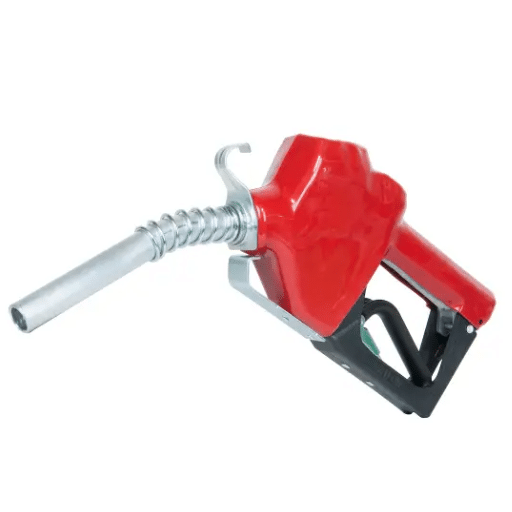
The right nozzle must be selected in order to assure safe and proper refueling. First, check for the nozzle fueling possibilities different from those of your vehicle. It can be gasoline, diesel, or an alternative fuel. Then, the color or label of the nozzle should be examined for confirmation of the grade to be dispensed. Never force a nozzle that doesn’t fit, as it is most likely not for your vehicle. Specific recommendations can easily be found in your vehicle manual, or can generally be found from the station attendants if you are unsure. Such steps help in avoiding mistakes in filling up and harming your engine.
Factors to Consider When Selecting a Nozzle
When selecting a fuel nozzle, the choice should be based on several factors:
Fuel Type Compatibility
Ensure the nozzle is suitable for the particular fuel type used by your vehicle: gasoline, diesel, or alternatives. Different nozzles are built for different flow rates, pressure levels, and other characteristics of fuels.
Size and Fit
The nozzle should be able to fit into your vehicle’s fuel tank inlet. Most gasoline nozzles are smaller than diesel ones to avoid being used interchangeably, so never attempt to force a nozzle that doesn’t fit; it is a clear sign of incompatibility.
Safety Features
Look for safety features such as an automatic shut-off to prevent spilling. Vapor recovery nozzles, created to cut down emissions, are commonly mandated in some places, thereby fostering environmental safety.
Flow Rate
Consider the flow rates a nozzle offers relative to your needs. High flow nozzles are generally considered for big tanks, such as truck tanks, while standard flow nozzles are fine for most personal vehicles.
Durability and Material
Opt for a nozzle that would be sturdy in terms of materials; hence, it is considered to last longer. Aluminum and stainless steel ones are favored for resisting corrosion and being durable.
Impact of Wrong Fuel Choices
If you fill your vehicle with the wrong fuel type, it can lead to some extremely costly and inconvenient troubles. In the case of an SI engine, if you put diesel by mistake, it may inflict damage on the fuel injectors and filters because diesel has a higher viscosity and is not meant to be burned inside a spark ignition-type engine. On the other hand, if diesel is filled with petrol, the fuel pumps and injectors would get damaged, while gasoline cannot act as a lubricant either, and eventually, one ends up with complete engine failure. The repair costs depend upon the extent of damage and what repairs are required; probably draining the fuel system and cleaning may be done, maybe changing parts or something more expensive. The newer engines with electronic systems need to be fueled very accurately for fueling thus making the misfueling quite worse. So, always be sure about your fuel type when you go for refueling.
Guidelines for Using Diesel in Gasoline Engines
Diesel fuel has largely been considered unsuitable for use in gasoline engines because of the fundamental difference in their method of combustion. Diesel fuel is heavier and less flammable than gasoline; hence, such cannot undergo ignition in a spark-ignition engine. When diesel is put in a gasoline engine by mistake, it may cause rough idling, misfiring, and, at worst, engine stalling. It may also cause damage to the fuel system and components because of the difference in the properties of the two fuels.
If diesel is in the gasoline, do not start the vehicle, as this can cause the diesel to be introduced into the system and further cause damage! Instead, get the vehicle inspected by a professional and serviced accordingly, which usually means draining the tank and cleaning out the fuel lines, followed by the replacement of fuel filters where necessary. Prevention is the key; therefore, always check for the right fuel before you put any in.
Common Mistakes with Fueling
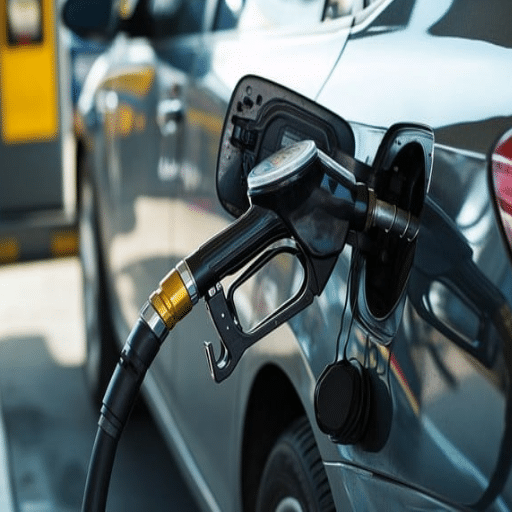
The Engine Running During Refueling
The engine running during refueling is a common yet wrongful practice. The risk of fire or explosion due to fuel vapor being ignited increases if the engine is running while refueling. Always turn off the engine before refueling.
Spilling Fuel
A second common type of refueling error is overfilling the fuel tank. This can cause fuel to spill all over, wasting the fuel and also possibly damaging the vehicle’s evaporative emission system. Refueling needs to be stopped when the automatic nozzle does so.
Wrong Fuel
Wrong fuel, for instance, putting gasoline in a diesel engine or vice versa, causes immense engine damage. Thus, always check twice for the type of fuel required for the vehicle. Generally, it is marked on the fuel cap or in the vehicle owner’s manual.
Ignoring Poor Quality Fuel
The use of low-grade or contaminated fuel can cause damage to your engine systems or clog important fuel system components; hence, do not allow this to happen to your vehicle. Buy fuel that is sold in genuine gas stations that keep approved storage standards.
Putting Diesel in a Gasoline Engine
Diesel fuel contamination in a petrol engine may lead to severe damage. Gasoline engine, by definition, cannot process diesel fuel because its combustion system works by spark ignition, whilst diesel requires compression ignition. Starting a car after putting in diesel fuel may cause problems such as misfire of engines, clogging of injectors, and damage to the fuel pump or the catalytic converter. Symptoms may manifest as rough idling, excess smoke, and inability to start.
In such a case, turning off the ignition is important, and one should rush to get assistance to drain the tank and clean the fuel system. Preventive measures would be to double-check the labels at the pump and verify what is required in the vehicle’s manual. Early recognition and careful action can significantly reduce the cost of repairs and long-term damage to your engine.
Consequences of Using the Wrong Fuel
Production companies fueling up an oil drum with specified gasoline have missed the right combination many times. Misfuelling involved putting a gasoline-type fuel into a diesel engine. Another way is putting diesel into a gasoline engine. Once the vehicle is started by either a mixture of misfuelling, increased damages occur. Hence, diesel misfuelling can even lead to the voiding of the warranties or call for very expensive system overhauls. It is important that one must realize the misfuelling and must not start the engine as early as possible to avoid the consequences.
How to Avoid Fuel Mix-Ups
Fuel mix-ups require a window of vigilance and simple preventive measures. First, before filling your vehicle, double-check the grade label on the fuel pump to make sure it matches your vehicle’s recommended type. Many stations label the nozzles or use colors for easy identification of gas versus diesel. Second, pay close attention whenever driving an unfamiliar car or a rented car; look at the indicated fuel type on the fuel cap or inside the manual. Third, consider employing some helpful tools, such as fuel-cap type reminders or fuel-type labels that stick to your dashboard or fuel door. Moreover, the habit of double-checking fuel type before starting to pump can save you from very costly slips. These few precautions can save you from heavy repairs or complications in due course.
Best Practices for Fueling
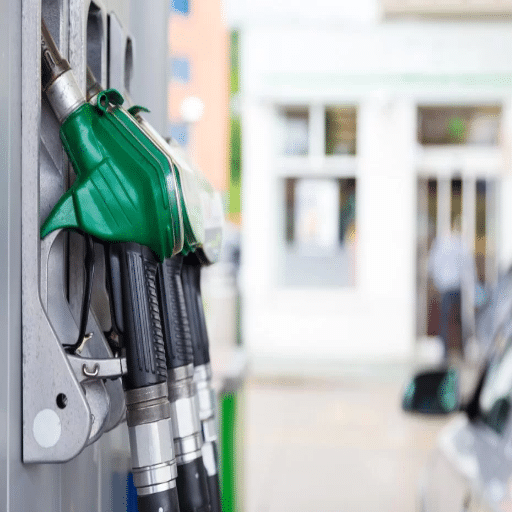
Confirm the Correct Fuel Type
Always verify the type of fuel the vehicle requires. Often, this information is displayed on the fuel cap itself or in the owner’s manual. Sometimes, it can even be seen by the fuel door.
Avoid Overfilling
Once the nozzle clicks automatically, stop filling to avoid spilling or damaging the vehicle’s vapor recovery system.
Turn Off the Engine, Tanking
Turn the engine completely off to keep the hazards of fire from happening during the fueling operation.
Avoid Distracted Fueling
Stay focused while you’re fueling to avoid errors like choosing the wrong pump or filling beyond what you require.
Inspect the Pump and Surroundings
Check for any signs of tampering or damage to the pump to avoid fraudulent activity or malfunctioning.
Simple but very effective tips designed to ensure a safe and efficient experience while refueling.
Tips for Using a Diesel Fuel Nozzle
Confirm You’re Using the Correct Nozzle
Diesel fuel nozzles are typically bigger than gasoline ones, often with clear labeling. Select the correct nozzle to avoid misfueling.
Prevent Spillage
Ensure the diesel nozzle is inserted fully into the tank’s opening before being fueled. This provides a secure fit that minimizes spills or leaks.
Look Out for Stops in Fuel Flow
Modern diesel pumps will stop by themselves and automatically shut off to prevent overflows from happening. Listen to the click and avoid topping it halfway.
Protect Against Cross-Contamination
Diesel fuel systems are very delicate. Make sure the nozzle set is clean and free from foreign particles. Cross-contamination with other fuels will ruin the system-taking it for an infusion.
Handle With Safety in Mind
If possible, wear gloves, and, if not using them, wash your hands thoroughly afterward. It will irritate the skin and leave a peculiar odor. Always abide by the station’s health and safety guidelines.
Following these travel companions, your vehicle will be in good condition, and the refueling of your vehicle will be done with efficiency and safety.
Proper Techniques for Gas Pumping
Proper techniques for gas pumping: I always choose the correct grade of fuel for my vehicle, so it does not suffer any performance issues. While pumping, I do not step away from the pump and ensure that the nozzle is inserted fully and securely into the tank, avoiding any spillage. After putting the fuel away, I make sure to put the gas cap on tightly so that pressure is maintained and the system sealed. These simple steps ensure that my refueling activities are carried out safely and efficiently every time.
Ensuring Correct Fuel Usage
First off, check your vehicle owner’s manual for fuel recommendations and octane levels. Opting for the right fuel will ensure the engine runs properly and does not get damaged in the long run. So, when pumping fuel, check to make sure you have the correct pump and label for your vehicle. Note fuel additives only when approved for your car to avoid adverse effects. Besides that, do not overfill the tank to keep more fuel from evaporating and harming the environment. Following these guidelines will keep your vehicle performing well, thereby increasing its lifespan and dependability.
Reference Sources
Numerical Analysis of Fuel Spray Penetration in Diesel Engines
Microscopic Imaging of Diesel Spray and Atomization Process
Frequently Asked Questions (FAQs)
What is the difference between diesel and gasoline nozzles?
A diesel nozzle enters a larger fuel filler neck typical of diesel vehicles, whereas gasoline nozzles, including unleaded ones, are smaller to fit petrol cars. The design helps to ensure that the wrong fuel is not accidentally added to a vehicle, which could potentially damage the engine.
Can I put gasoline into a diesel tank?
Putting gasoline into the diesel tank damages the diesel engine to a large extent. Diesel engines run on diesel fuel, and with the addition of gasoline, fuel injectors and engine performance are compromised.
What will happen if diesel is put in a gasoline car by mistake?
Putting diesel in a gasoline car by mistake will cause lower engine power, misfiring, and eventual failure if the fuel is not removed immediately. Open the tank and drain all the diesel fuel as soon as possible to avoid expensive repairs.
Are diesel nozzles bigger than gasoline nozzles?
That is right-diesel nozzles are larger than gasoline nozzles. The intent behind this size difference is to ensure that a diesel nozzle cannot mistakenly be forced into a petrol car, so that each vehicle is forced to take the correct fuel.
How do I choose my nozzle?
The type of nozzle depends on the fuel required by the vehicle. Diesel nozzles fit diesel fuel tanks, while unleaded ones fit petrol cars. Always check for the type of fuel before filling, in case of any mixing.
What if I have put petrol into a diesel vehicle?
If petrol is put into the diesel vehicle, do not start the engine. Call roadside assistance or mechanics to have the fuel tank drained. Starting the engine would cause great damage, including to the diesel injectors.
Can unled nozzles fit into diesel fuel tanks?
Wrong fuel pumps will be of different diameters, and these will be deliberately kept smaller than one for diesel to prevent an unknowing person from putting gasoline into a diesel vehicle.
What happens if the wrong fuel is used?
Using the wrong fuel may cause knocking and misfiring and therefore put the vehicle into severe engine damage. For the best prevention and proper working of a vehicle, the right fuel has to be used for the vehicle.

